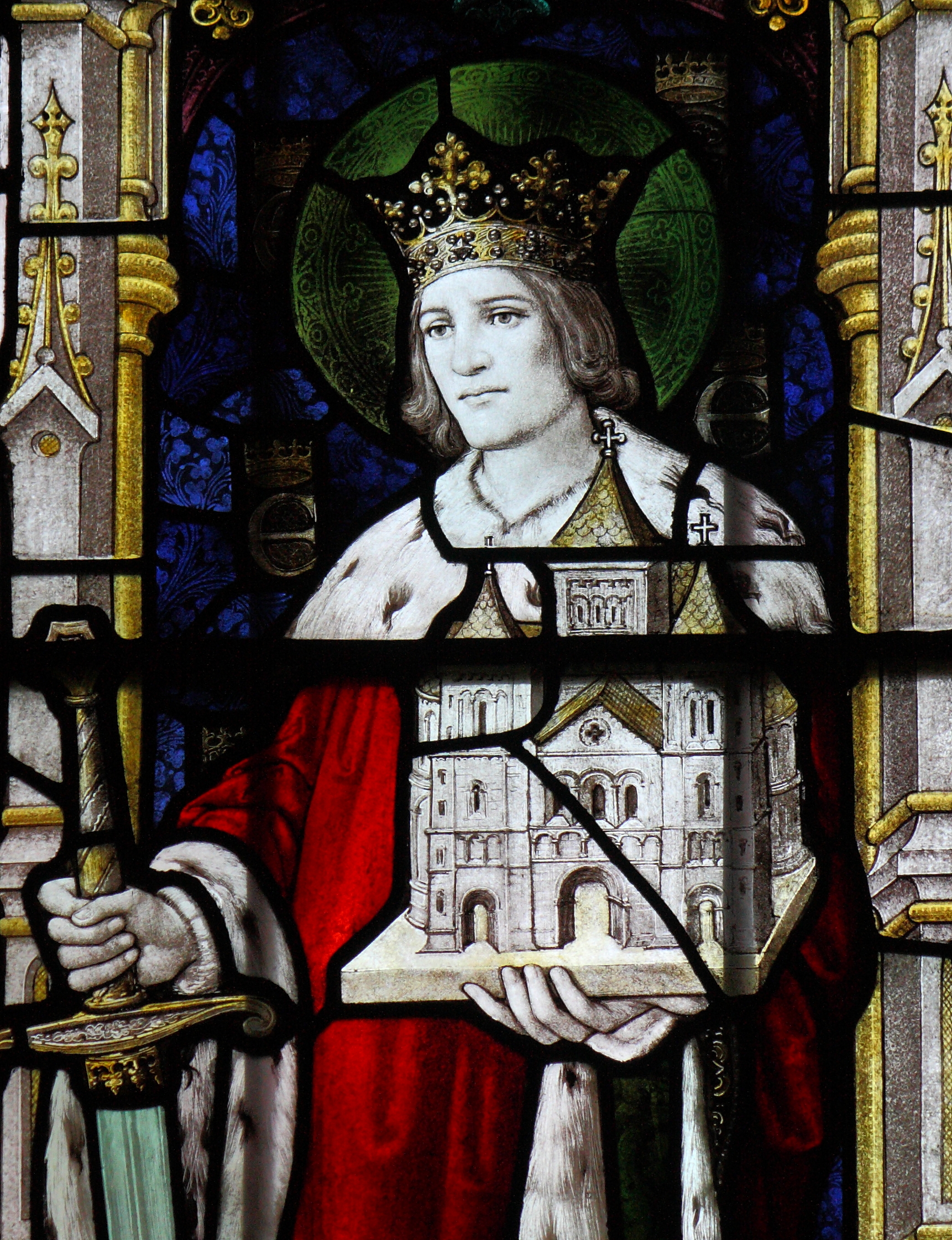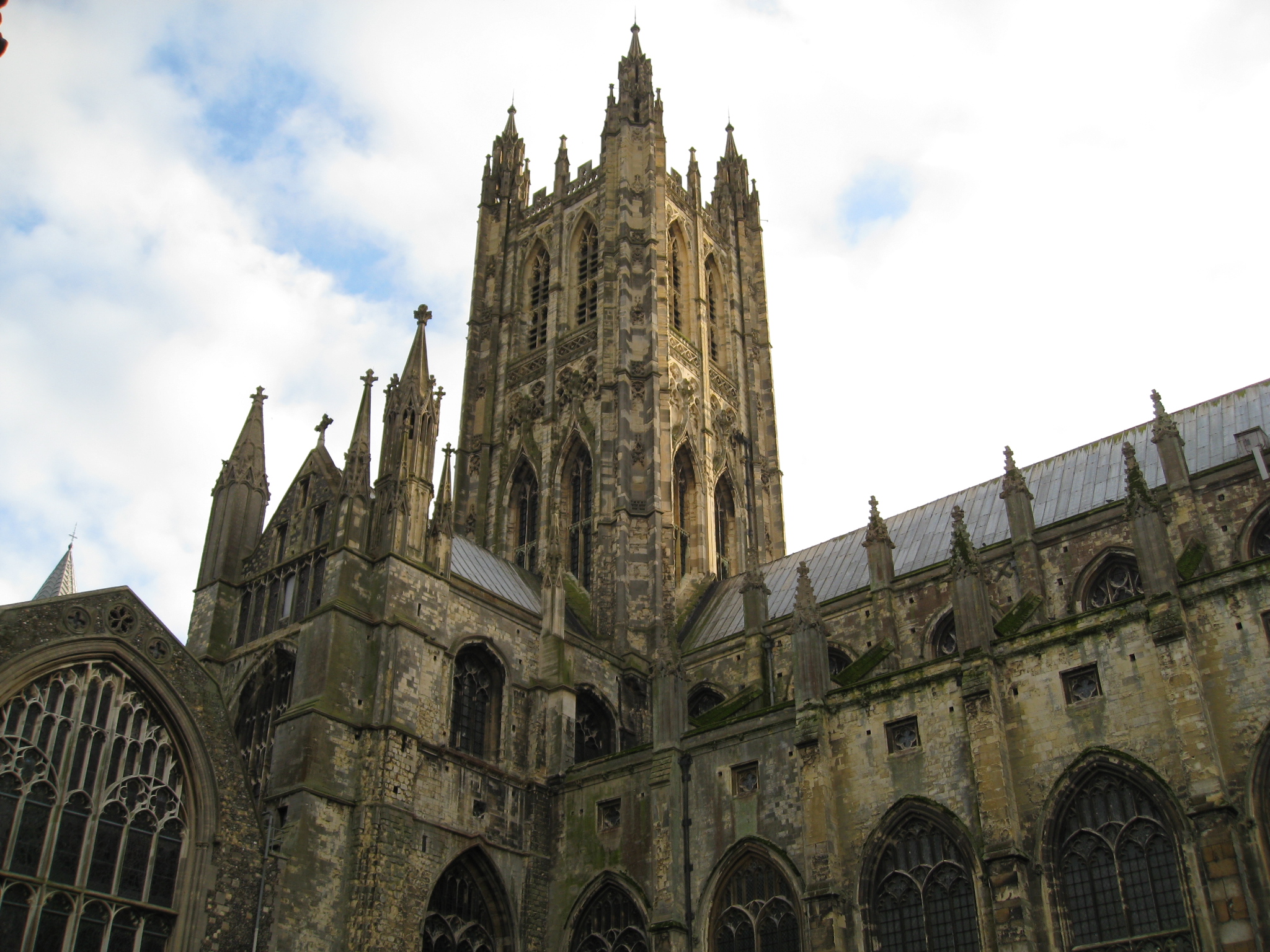|
Lyminge Abbey
Lyminge Abbey was an abbey about four miles northwest of Folkestone on the south coast of Kent. It was one of the first religious houses to be founded in England. History Æthelburh of Kent (Ethelburga) was the daughter of the Christian King Æthelberht of Kent. She married King Edwin of Northumbria in 625, an important event in the transmission of Christianity from Kent to the north of England as his conversion was a condition of their marriage. After Edwin was killed at the Battle of Hatfield Chase in 633, Ethelburga returned to Kent to become abbess of a new nunnery and convent at Lyminge. When she died in 647 she was venerated as a saint. Lyminge suffered from numerous Viking raids due to its particular vulnerability, and its people were subsequently taken refuge for protection in the city of Canterbury by 804. The exact location of the abbey is not known but is believed to be around Lyminge Lyminge is a village in southeast Kent, England. It lies about five miles (8 ... [...More Info...] [...Related Items...] OR: [Wikipedia] [Google] [Baidu] |
Abbey
An abbey is a type of monastery used by members of a religious order under the governance of an abbot or abbess. Abbeys provide a complex of buildings and land for religious activities, work, and housing of Christian monks and nuns. The concept of the abbey has developed over many centuries from the early monastic ways of religious men and women where they would live isolated from the lay community about them. Religious life in an abbey may be monastic. An abbey may be the home of an enclosed religious order or may be open to visitors. The layout of the church and associated buildings of an abbey often follows a set plan determined by the founding religious order. Abbeys are often self-sufficient while using any abundance of produce or skill to provide care to the poor and needy, refuge to the persecuted, or education to the young. Some abbeys offer accommodation to people who are seeking spiritual retreat. There are many famous abbeys across the Mediterranean Basin and Europe ... [...More Info...] [...Related Items...] OR: [Wikipedia] [Google] [Baidu] |
Folkestone
Folkestone ( ) is a port town on the English Channel, in Kent, south-east England. The town lies on the southern edge of the North Downs at a valley between two cliffs. It was an important harbour and shipping port for most of the 19th and 20th centuries. There has been a settlement in this location since the Mesolithic era. A nunnery was founded by Eanswith, granddaughter of Æthelberht of Kent in the 7th century, who is still commemorated as part of the town's culture. During the 13th century it subsequently developed into a seaport and the harbour developed during the early 19th century to provide defence against a French invasion. Folkestone expanded further west after the arrival of the railway in 1843 as an elegant coastal resort, thanks to the investment of the Earl of Radnor under the urban plan of Decimus Burton. In its heyday - during the Edwardian era - Folkestone was considered the most fashionable resort of the time, visited by royalties - amongst them Queen Vic ... [...More Info...] [...Related Items...] OR: [Wikipedia] [Google] [Baidu] |
Kent
Kent is a county in South East England and one of the home counties. It borders Greater London to the north-west, Surrey to the west and East Sussex to the south-west, and Essex to the north across the estuary of the River Thames; it faces the French department of Pas-de-Calais across the Strait of Dover. The county town is Maidstone. It is the fifth most populous county in England, the most populous non-Metropolitan county and the most populous of the home counties. Kent was one of the first British territories to be settled by Germanic tribes, most notably the Jutes, following the withdrawal of the Romans. Canterbury Cathedral in Kent, the oldest cathedral in England, has been the seat of the Archbishops of Canterbury since the conversion of England to Christianity that began in the 6th century with Saint Augustine. Rochester Cathedral in Medway is England's second-oldest cathedral. Located between London and the Strait of Dover, which separates England from mainla ... [...More Info...] [...Related Items...] OR: [Wikipedia] [Google] [Baidu] |
Æthelburh Of Kent
Æthelburh of Kent (born c. 601, sometimes spelled ''Æthelburg'', ''Ethelburga, Æthelburga''; , also known as ''Tate or Tata),''Stowe 944: ' was an early Anglo-Saxon queen consort of Northumbria, the second wife of King Edwin. As she was a Christian from Kent, their marriage triggered the initial phase of the conversion of the pagan north of England to Christianity. Early life and marriage Æthelburh was born in the early 7th century, as the daughter of King Æthelberht of Kent (sometimes spelled Aethelberht) and his queen Bertha, and sister of Eadbald. In 625, she married Edwin of Northumbria as his second wife. A condition of their marriage was Edwin's conversion to Christianity and the acceptance of Paulinus's mission to convert the Northumbrians.Stowe 944: ' Æthelburh's children with Edwin were: Eanflæd, Ethelhun, Wuscfrea and Edwen. Her daughter Eanflæd grew up under the protection of her uncle, King Eadbald of Kent. Bede, ''Ecclesiastical History'' (2.20) ... [...More Info...] [...Related Items...] OR: [Wikipedia] [Google] [Baidu] |
Æthelberht Of Kent
Æthelberht (; also Æthelbert, Aethelberht, Aethelbert or Ethelbert; ang, Æðelberht ; 550 – 24 February 616) was King of Kent from about 589 until his death. The eighth-century monk Bede, in his ''Ecclesiastical History of the English People'', lists him as the third king to hold ''imperium'' over other Anglo-Saxon kingdoms. In the late ninth century ''Anglo-Saxon Chronicle'', he is referred to as a ''bretwalda'', or "Britain-ruler". He was the first English king to convert to Christianity. Æthelberht was the son of Eormenric, succeeding him as king, according to the ''Chronicle''. He married Bertha, the Christian daughter of Charibert I, king of the Franks, thus building an alliance with the most powerful state in contemporary Western Europe; the marriage probably took place before he came to the throne. Bertha's influence may have led to Pope Gregory I's decision to send Augustine as a missionary from Rome. Augustine landed on the Isle of Thanet in east Ken ... [...More Info...] [...Related Items...] OR: [Wikipedia] [Google] [Baidu] |
Edwin Of Northumbria
Edwin ( ang, Ēadwine; c. 586 – 12 October 632/633), also known as Eadwine or Æduinus, was the King of Deira and Bernicia – which later became known as Northumbria – from about 616 until his death. He converted to Christianity and was baptised in 627; after he fell at the Battle of Hatfield Chase, he was venerated as a saint. Edwin was the son of Ælle, the first known king of Deira, and seems to have had at least two siblings. His sister Acha was married to Æthelfrith, king of neighbouring Bernicia. An otherwise unknown sibling fathered Hereric, who in turn fathered Abbess Hilda of Whitby and Hereswith, wife to Æthelric, the brother of king Anna of East Anglia. Early life and exile The ''Anglo-Saxon Chronicle'' reported that on Ælle's death a certain " Æthelric" assumed power. The exact identity of Æthelric is uncertain. He may have been a brother of Ælle, an elder brother of Edwin, an otherwise unknown Deiran noble, or the father of Æthelfrith ... [...More Info...] [...Related Items...] OR: [Wikipedia] [Google] [Baidu] |
Battle Of Hatfield Chase
The Battle of Hatfield Chase ( ang, Hæðfeld; owl, Meigen) was fought on 12 October 633 at Hatfield Chase near Doncaster (today part of South Yorkshire, England). It pitted the Northumbrians against an alliance of Gwynedd and Mercia. The Northumbrians were led by Edwin and the Gwynedd-Mercian alliance was led by Cadwallon ap Cadfan and Penda. The site was a marshy area about northeast of Doncaster on the south bank of the River Don. It was a decisive victory for Gwynedd and the Mercians: Edwin was killed and his army defeated, leading to the temporary collapse of Northumbria. Background Edwin, the most powerful ruler in Britain at the time, had seemingly defeated Cadwallon a few years before the battle. Bede refers to Edwin establishing his rule over what he called the Mevanian islands, one of which was Anglesey, and another source refers to Cadwallon being besieged on the island of Priestholm (AC: Glannauc), which is off the coast of Anglesey. Later, Cadwallon defeated and ... [...More Info...] [...Related Items...] OR: [Wikipedia] [Google] [Baidu] |
Viking
Vikings ; non, víkingr is the modern name given to seafaring people originally from Scandinavia (present-day Denmark, Norway and Sweden), who from the late 8th to the late 11th centuries raided, pirated, traded and settled throughout parts of Europe.Roesdahl, pp. 9–22. They also voyaged as far as the Mediterranean, North Africa, Volga Bulgaria, the Middle East, and North America. In some of the countries they raided and settled in, this period is popularly known as the Viking Age, and the term "Viking" also commonly includes the inhabitants of the Scandinavian homelands as a collective whole. The Vikings had a profound impact on the early medieval history of Scandinavia, the British Isles, France, Estonia, and Kievan Rus'. Expert sailors and navigators aboard their characteristic longships, Vikings established Norse settlements and governments in the British Isles, the Faroe Islands, Iceland, Greenland, Normandy, and the Baltic coast, as well as ... [...More Info...] [...Related Items...] OR: [Wikipedia] [Google] [Baidu] |
Canterbury
Canterbury (, ) is a cathedral city and UNESCO World Heritage Site, situated in the heart of the City of Canterbury local government district of Kent, England. It lies on the River Stour. The Archbishop of Canterbury is the primate of the Church of England and the worldwide Anglican Communion owing to the importance of St Augustine, who served as the apostle to the pagan Kingdom of Kent around the turn of the 7th century. The city's cathedral became a major focus of pilgrimage following the 1170 martyrdom of Thomas Becket, although it had already been a well-trodden pilgrim destination since the murder of St Alphege by the men of King Canute in 1012. A journey of pilgrims to Becket's shrine served as the frame for Geoffrey Chaucer's 14th-century classic ''The Canterbury Tales''. Canterbury is a popular tourist destination: consistently one of the most-visited cities in the United Kingdom, the city's economy is heavily reliant upon tourism. The city has been o ... [...More Info...] [...Related Items...] OR: [Wikipedia] [Google] [Baidu] |
Lyminge
Lyminge is a village in southeast Kent, England. It lies about five miles (8 km) from Folkestone and the Channel Tunnel, on the road passing through the Elham Valley. At the 2011 Census the population of Etchinghill was included. The Nailbourne stream begins in the village and flows north through the Valley, to become one of the tributary streams of the Great Stour. The hamlet of Ottinge lies to the NE on the road to Elham. Lyminge is home to the Grade II* listed Sibton Park, now owned by the Holiday Property Bond but previously a school. The village is surrounded by farmland and ancient forests. There is a wide variety of flora and fauna in the surrounding area, including badgers, various species of deer along with wild boar which are thought to have escaped from farmed populations. Lyminge was a royal centre of the Kingdom of Kent of Anglo-Saxon England and a church was founded in 633. Church One of the oldest standing structures in the village is the Parish Church ... [...More Info...] [...Related Items...] OR: [Wikipedia] [Google] [Baidu] |


.jpg)



_A.jpg)